- MOE
- National Parks of Japan
- Iriomote-Ishigaki National Park
- Characteristics
main body
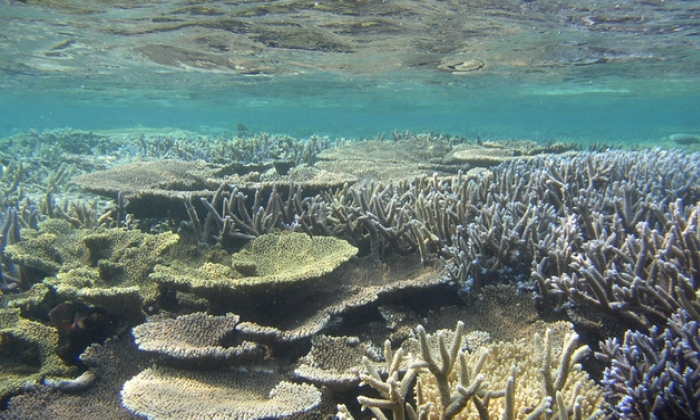
Characteristics
Primeval Subtropical Forest and Ocean with Coral Reefs
Date of Designation: May 15, 1972
Incorporation of Ishigaki-jima Island Region: August 1, 2007
Area: 21,958 ha (land area)
Related Prefecture: Okinawa
Incorporation of Ishigaki-jima Island Region: August 1, 2007
Area: 21,958 ha (land area)
Related Prefecture: Okinawa
Iriomote-Ishigaki National Park is the southernmost national park in Japan. The park is characterized by its natural landscape typical of the subtropical zone--a dynamic and abundant natural environment comprising near-primeval subtropical broad-leafed evergreen forest as well as Japan's largest mangrove forest, and coral reefs--and its human landscape imbued with a traditional Okinawa-ness that has been nurtured through everyday living within this environment. Another major characteristic is the numerous rare animal species unique to Yaeyama that can be found here, represented by the Iriomote wild cat and Sakishima grass lizard, which has evolved independently as the archipelago separated from and rejoined the continent repeatedly. Iriomote-Ishigaki National Park provides visitors with places and opportunities for high-quality nature experiences, offering a wealth of marine leisure activities such as canoeing, snorkeling, scuba-diving, and mangrove cruises as well as land leisure activities such as trekking, animal watching, and driving against the backdrop of the vast subtropical wilderness.
Terrain/ Scenery
History
The Yaeyama region, where the Iriomote-Ishigaki National Park is located, is situated at the southernmost end of the Ryukyu Island chain, which curves in an arc. Due to violent crustal movement the continent and the Japanese mainland connected and separated repeatedly from the Tertiary period of the Cenozoic era (approx. 23 million to 1.7 million years ago) onwards.
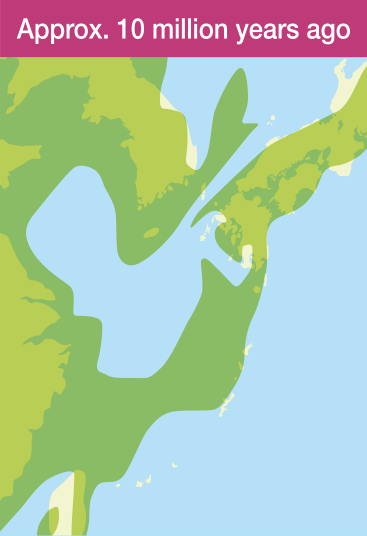
Approx. 10 million years ago, the Japanese islands and the continent were joined. This is thought to have enabled the ancestors of the Iriomote wild cat and many other animals to cross from the continent to the islands during this period.
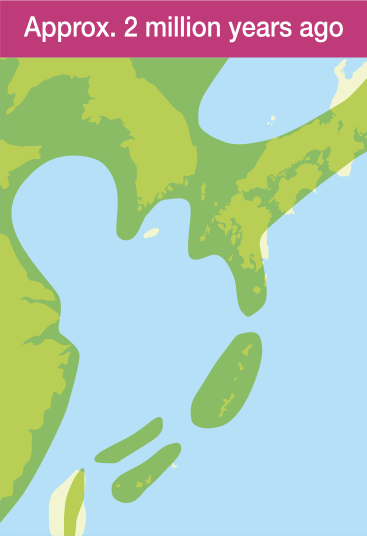
Approx. 2 million years ago, the Ryukyu Islands were divided into three blocks: the North Ryukyus, which were connected to Kyushu Island, Central Ryukyus, and Southern Ryukyus. The Yaeyama regions, where the Iriomote-Ishigaki National Park is located, is included in the Southern Ryukyus.
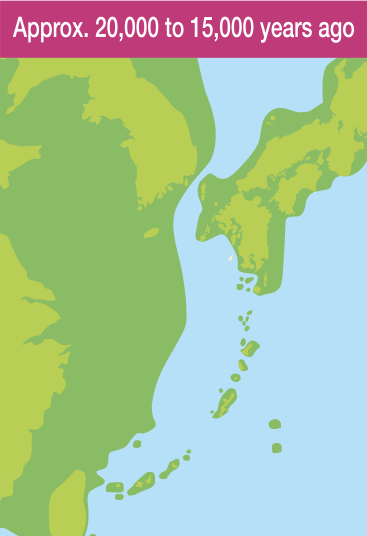
Approx. 20,000 to 15,000 years ago, the Ryukyu Islands separated from the continent, limiting the migration of many organisms. Consequently, the organisms that had migrated from the continent became confined to the islands forming the Ryukyu Island chain, and over tens of thousands of years, these creatures evolved into species unique to each of the islands.
Plants
In addition to endemic plant species that only grow on Iriomote-jima Island, such as Asarum yaeyamensis and Chikusichloa brachyanthera, Iriomote-Ishigaki National Park is home to endemic that only grow on Ishigaki-jima and Iriomote-jima Islands, such as the Yaeyama palm tree and Rhododendron amanoi Ohwi, as well as Rhaphidophora kortharthii and Macodes petola, the northern distribution limit for which is Iriomote-jima Island.
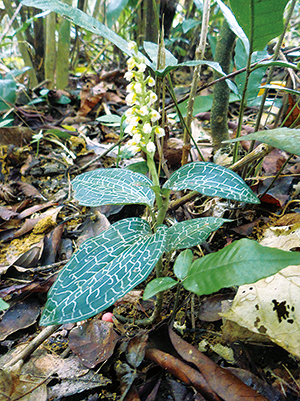
Macodes peto
Furthermore, in brackish-water areas, such as river mouths and along coastlines, where fresh water and sea water mix, there are extensive mangrove forests, representative of the Yaeyama landscape.
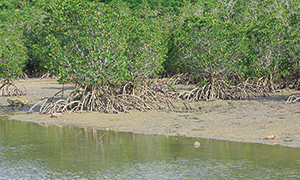
Mangrove Forest
In the park can be seen many plant communities that have been designated as National Natural Monuments, such as the Yaeyama Palms in the Yonehara palm tree Community and the Arakawa Taiwan Cherry Habitat on Ishigaki-jima Island; the Nipa Palms in Funaura on Iriomote-jima Island, and the Heritiera littoralis community in Komi.
Wildlife
Iriomote-Ishigaki National Park's ecosystems are characterized by ocean-river-mountain continuity. A diversity of ecosystems formed in response to a diversity of natural environments--forest ecosystems comprising evergreen broad-leafed forests of Castanopsis sieboldii and Quercus miyagii; mangrove ecosystems comprising mangrove forests of Black mangrove and Rhizophora mucronata; coastal ecosystems comprising coastal forests of Pandanus odoratissimus and Beach Hibiscus ; and coral ecosystems comprising a diversity of hermatypic coral species--are closely related through water and material cycles, and the continuity of these ecosystems creates an extremely highly productive natural environment. This is clearly illustrated by the fact that Iriomote-jima Island is known as the smallest island in the world where Wildcats live, showing the high degree of wildlife diversity in Iriomote-Ishigaki National Park.
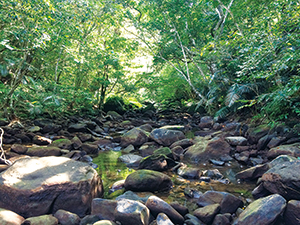
Subtropical Forest (upper Hinai-River )
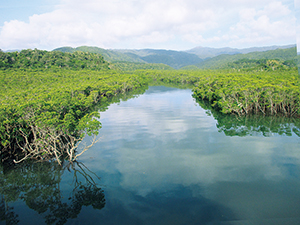
Mangrove Forest (Shiira River)
In addition to endemic animal species that live only on the Yaeyama Islands, such as the Iriomote wild cat and Kishinoue's Giant Skink, Iriomote-Ishigaki National Park is home to many species for which the Yaeyama Islands are the northern distribution limit, such as the Crested serpent eagle and Yellow-margined Box Turtle, forming a richly bio-diverse flora of unique and rare wildlife.
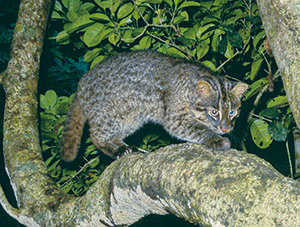
Iriomote Wild Cat
Between Ishigaki-jima and Iriomote-jima Islands lies Sekisei Lagoon, Japan's largest coral reef. Although located near the northern distribution limit for coral, the area has the largest diversity of coral reef species in Japan due to influence of the Kuroshio Current. More than 360 species of hermatypic coral (Scleractinia) have been confirmed, their diversity on par with that of the Great Barrier Reef, which is the world's largest coral reef.
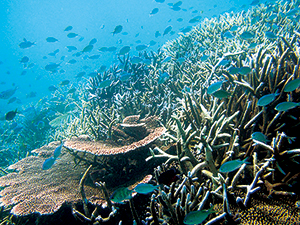
Sekisei Lagoon Coral Ocean
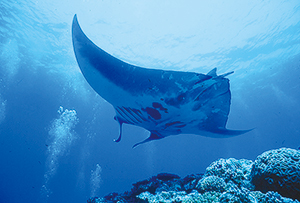
Manta alfredi
Culture
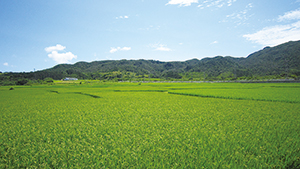
Rice Paddies on Iriomote-jima Island (Mihara)

Iriomote-jima Island settlement (Sonai)
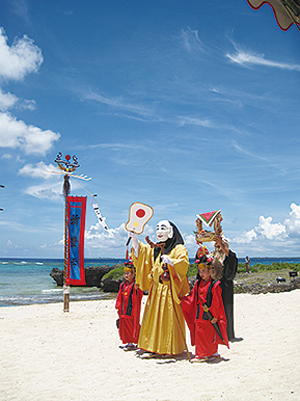
Harvest Festival (Kuro-shima Island)
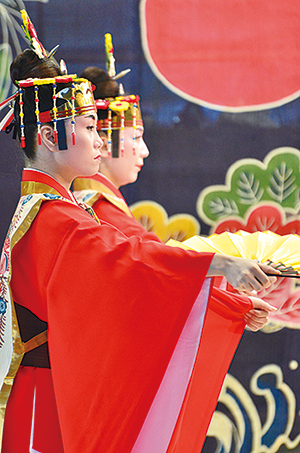
Tanadui Festival (Taketomi-jima Island)
The vast nature of the Yaeyama region sustains the daily lives of local residents as the foundation for their lifestyles. By actively incorporating nature into their daily lives, the people have nurtured traditional construction methods--represented by Ishigaki stonewalling using Ryukyu limestone--traditional agricultural/forestry/fishing methods-- represented by the Nagaki fishing technique -- and a unique food culture, and their concept of nature--which they worship in gratitude for these blessings--is also the source for cultural elements such as folk songs and rituals.
Numerous cultural traditions that also appeal to people today have been passed down, including the red-tiled roofs on house after house in villages, and on Taketomi-jima Island especially; Kuro-shima's Harvest Festival, where people pray for the productivity of the sea; and Iriomote-jima Island's Shichi Festival. Moreover, because the culture of the Yaeyama region has been propagated as a bridge linking the various islands, the region has a unified commonality, yet at the same time each island maintains its own unique character based on its natural and regional characteristics, creating an appealing culture for the Yaeyama region overall.
Numerous cultural traditions that also appeal to people today have been passed down, including the red-tiled roofs on house after house in villages, and on Taketomi-jima Island especially; Kuro-shima's Harvest Festival, where people pray for the productivity of the sea; and Iriomote-jima Island's Shichi Festival. Moreover, because the culture of the Yaeyama region has been propagated as a bridge linking the various islands, the region has a unified commonality, yet at the same time each island maintains its own unique character based on its natural and regional characteristics, creating an appealing culture for the Yaeyama region overall.
